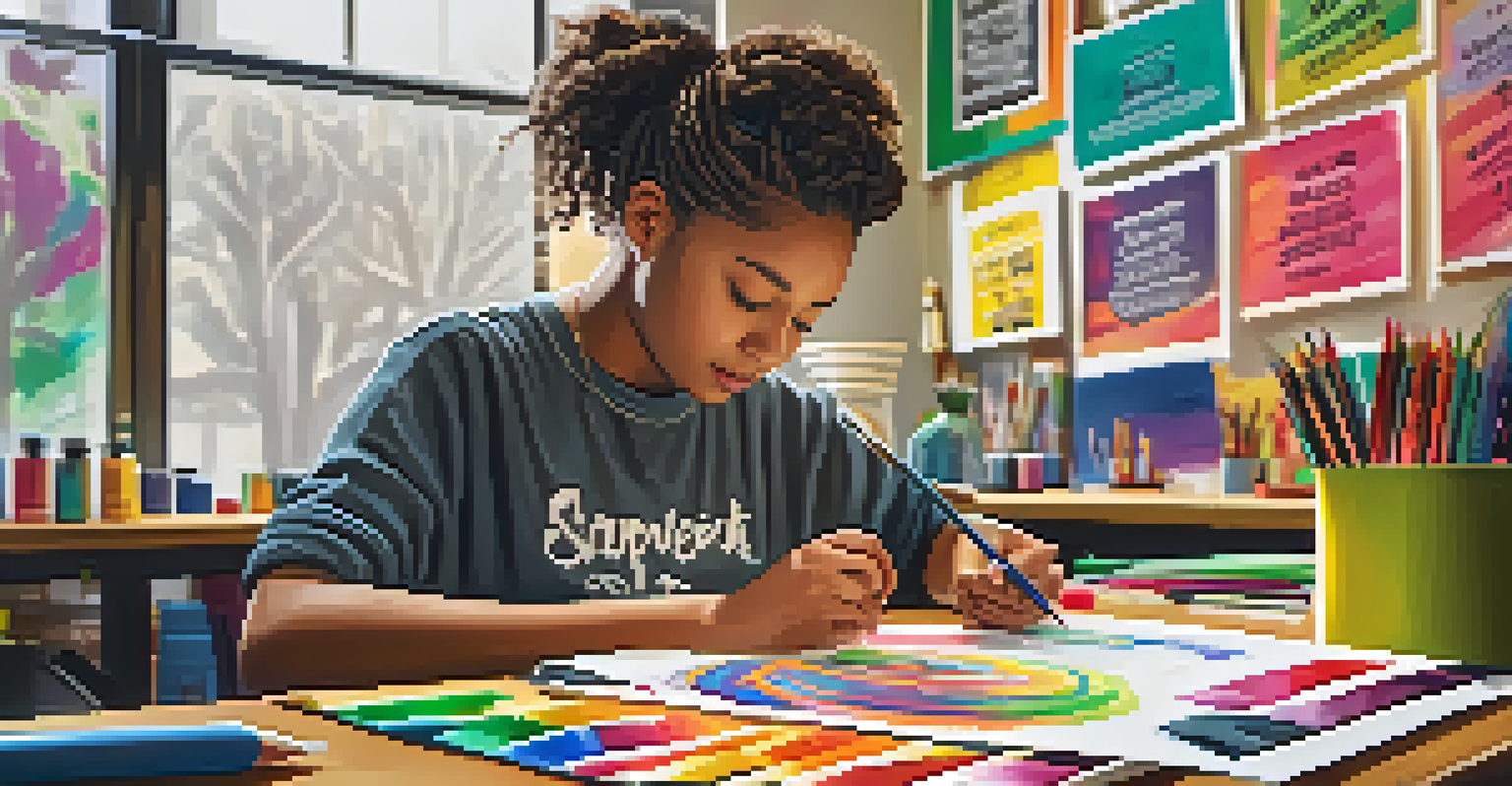Strategies for Engaging Students in Blended Learning

Understanding Blended Learning: A Hybrid Approach
Blended learning combines traditional face-to-face instruction with online elements, providing flexibility and personalization. This approach allows educators to adapt their teaching methods to meet diverse student needs. By blending various learning modalities, students can take control of their learning pace, making education more engaging and effective.
Education is not the filling of a pail, but the lighting of a fire.
Imagine a classroom where students can choose to explore topics through videos, interactive quizzes, or in-person discussions. This variety not only keeps students interested but also caters to different learning styles, such as visual or auditory learners. With blended learning, the possibilities for engaging students are as broad as their interests.
Ultimately, understanding the concept of blended learning sets the foundation for implementing effective engagement strategies. As educators become more familiar with its principles, they can better design their courses to motivate and inspire their students.
Creating a Collaborative Learning Environment
Collaboration is key in keeping students engaged in blended learning. By fostering a sense of community, students feel more invested in their learning journey and are encouraged to participate actively. Collaborative tools such as discussion boards, group projects, and peer reviews can facilitate this interaction.

Think of a virtual study group where students share insights and tackle challenges together. This not only enhances their learning experiences but also builds essential skills like teamwork and communication. When students collaborate, they learn from each other, making the learning process more dynamic and enjoyable.
Blended Learning Enhances Engagement
Combining traditional teaching with online elements allows for personalized learning experiences that cater to diverse student needs.
By implementing collaborative activities, educators can create an environment where students feel supported and motivated. This sense of belonging can significantly increase engagement and help students thrive in a blended learning setting.
Incorporating Interactive Technology Tools
Using technology tools that promote interactivity can significantly boost student engagement in blended learning. Platforms like Kahoot, Quizlet, and Google Classroom offer engaging ways for students to participate in lessons and assignments. These tools not only make learning fun but also encourage students to take an active role in their education.
The only way to do great work is to love what you do.
Consider using polls or live quizzes during a lesson to gauge student understanding in real-time. This instant feedback allows teachers to adjust their instruction based on student responses, ensuring that no one falls behind. Moreover, interactive technology creates a lively classroom atmosphere that keeps students focused and involved.
Ultimately, incorporating these technology tools into blended learning strategies helps create a vibrant and stimulating learning environment. As students engage with the material in various ways, they are more likely to retain information and develop a deeper understanding of the subject matter.
Personalizing Learning Experiences for Students
Personalization is at the heart of effective blended learning strategies. By tailoring learning experiences to individual student needs, educators can foster greater engagement and motivation. This might involve offering different assignment options or allowing students to choose their learning paths based on their interests.
Imagine a student who loves art being able to create a visual project instead of writing a traditional essay. This not only showcases their strengths but also makes learning more enjoyable. When students see their interests reflected in their assignments, they are more likely to invest time and effort into their work.
Collaboration Boosts Student Involvement
Creating a collaborative environment through interactive tools encourages students to actively engage and invest in their learning journey.
By prioritizing personalization, educators can create an environment that respects each student's unique learning journey. This approach not only enhances engagement but also empowers students to take ownership of their learning.
Encouraging Self-Directed Learning Skills
In a blended learning environment, fostering self-directed learning is crucial. Encouraging students to set their own goals, manage their time, and seek resources independently promotes a sense of responsibility and ownership over their education. This not only keeps them engaged but also prepares them for lifelong learning.
For example, teachers can guide students in creating personal learning plans that outline their objectives and strategies for achieving them. By giving students the tools to navigate their learning, they become more invested in the process. This sense of autonomy can lead to increased motivation and deeper engagement.
Ultimately, cultivating self-directed learning skills empowers students to take charge of their educational journey. As they develop these skills, they are more likely to remain engaged and passionate about their learning.
Providing Timely and Constructive Feedback
Feedback is vital for student engagement, especially in blended learning environments. Providing timely and constructive feedback helps students understand their progress and areas for improvement. This ongoing dialogue not only boosts their confidence but also encourages them to stay engaged in their learning.
For instance, using online tools that allow for instant feedback can be incredibly beneficial. When students receive prompt responses to their work, they can make adjustments and stay motivated to improve. This immediate reinforcement keeps them focused and invested in the learning process.
Real-World Relevance Increases Motivation
Integrating real-world applications into lessons helps students see the importance of their studies, making learning more meaningful and engaging.
By prioritizing timely feedback, educators can create a supportive atmosphere where students feel valued and motivated to engage. This practice not only enhances learning outcomes but also fosters a strong student-teacher relationship.
Integrating Real-World Applications in Learning
Connecting lessons to real-world applications can significantly enhance student engagement in blended learning. When students see the relevance of their studies to everyday life, they are more likely to be motivated and involved. This could involve project-based learning or case studies that illustrate practical applications of theoretical concepts.
Picture students tackling a project that involves solving a community issue. This not only encourages collaboration but also gives them a sense of purpose. When students can relate their learning to real-world situations, they are more likely to retain information and stay engaged.

By integrating real-world applications into the curriculum, educators can create a meaningful learning experience. This approach not only captivates students' interest but also prepares them for future challenges beyond the classroom.
Fostering a Growth Mindset for Lifelong Learning
Promoting a growth mindset is essential in engaging students in blended learning environments. When students believe that their abilities can improve through effort and perseverance, they are more likely to embrace challenges and stay engaged. This mindset shifts the focus from grades to the learning process, fostering resilience and curiosity.
For example, teachers can share stories of famous individuals who overcame obstacles to achieve success. These narratives inspire students to see setbacks as opportunities for growth rather than failures. By cultivating a growth mindset, educators can motivate students to take risks and explore new ideas.
Ultimately, fostering a growth mindset encourages students to view learning as a lifelong journey. This positive perspective not only enhances engagement but also equips students with the skills they need to adapt and thrive in an ever-changing world.